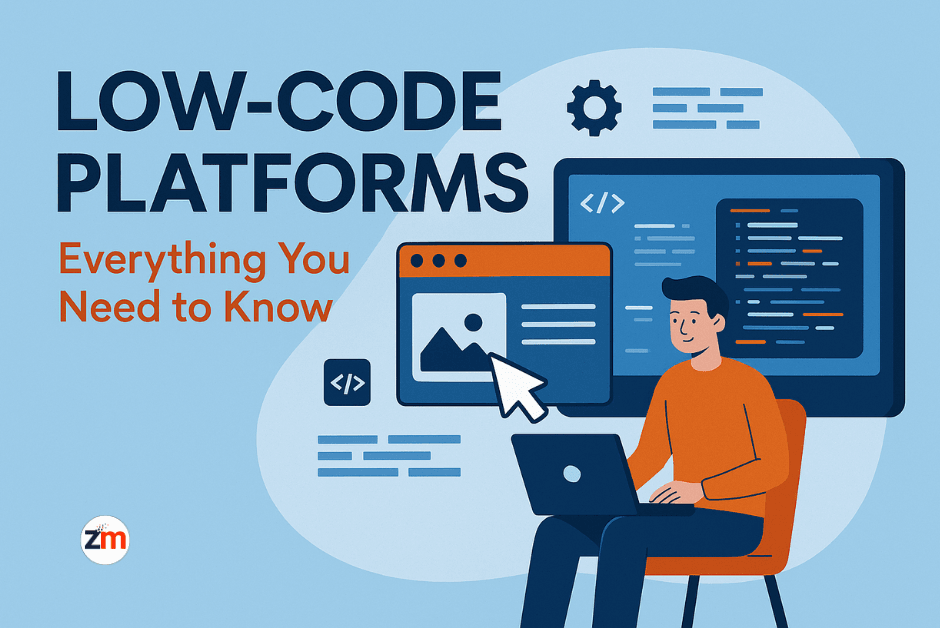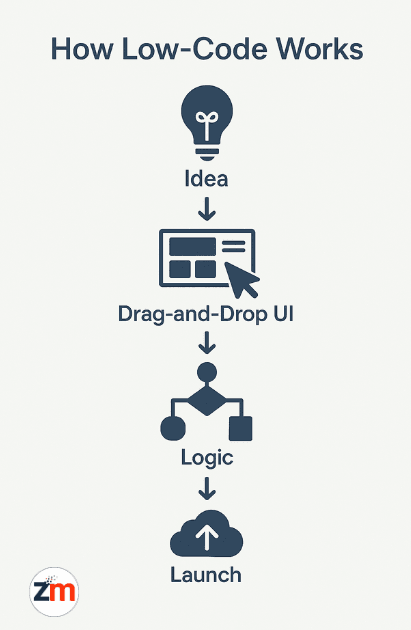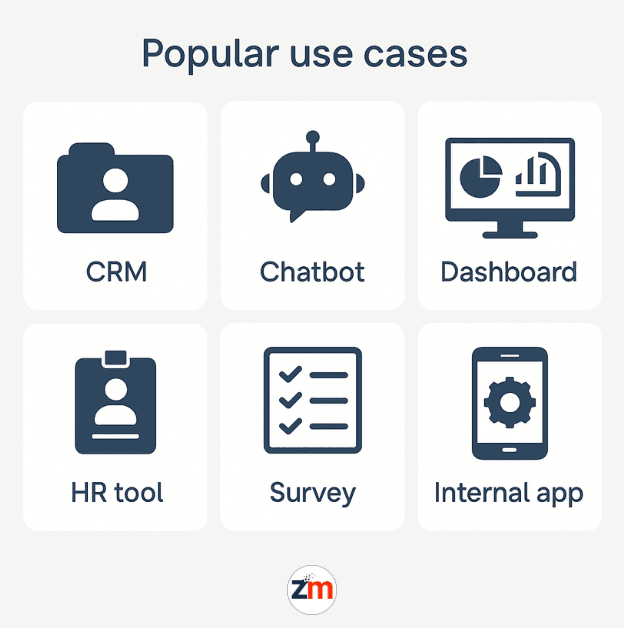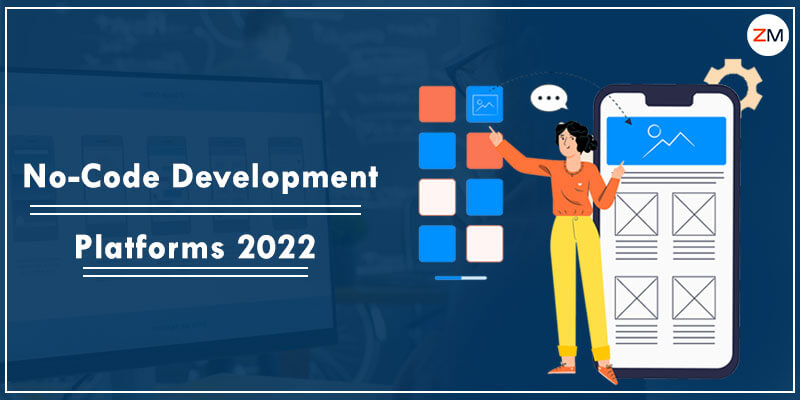Low-Code Platforms: Build Apps Faster in 2025
Still waiting on devs to deliver your MVP? Low-code platforms change the game—build scalable apps without writing thousands of lines of code. This guide explains how startups and teams are launching faster, cheaper, and smarter in 2025 with low-code tools.

TL;DR – Why Low-Code Matters in 2025
- Low-code enables 10x faster development cycles
- Perfect for MVPs, internal dashboards, and workflow tools
- Visual UIs, automation, and one-click deploy included
- Empowers devs and business teams alike
- Combines scalability with affordability
The Rise of Low-Code Development
Imagine this: You're a startup founder with a brilliant idea. But every time you call a dev agency, they hit you with a $30k quote and a 4-month timeline. Ouch.
Enter low-code platforms, the smart way to build apps without writing every line from scratch. From drag-and-drop UIs to ready-made backend logic, low-code gives you superpowers even if you're not a developer.
The global market is booming. According to Forrester, low-code is accelerating across the US, UK, Canada, Australia, and Germany.
What is a Low-Code Platform?
A low-code development platform lets you build apps visually, like Lego blocks. It combines drag-and-drop builders, logic flows, templates, and integrations, so even non-developers can launch working software fast.
Instead of manually coding UI and backend logic, you use visual editors, pre-built components, and automation triggers. Perfect for building forms, dashboards, CRMs, or internal tools without a full dev team.
Traditional coding = Building a car from scratch.
Low-code = Assembling a Tesla from pre-built modules. Fast. Sleek. Scalable.
- Visual UI Builders – Create responsive layouts without HTML/CSS
- Logic & Workflows – Define app behavior with if/then rules
- Ready-Made Templates – Start fast with pre-configured apps
- Automation – Trigger actions, emails, data flows with ease
- One-Click Deploy – Go live instantly, no DevOps headaches

Key Features of Low-Code Platforms
What makes low-code a developer's (and founder's) dream?
Drag-and-Drop UI Builder
Design stunning interfaces by simply moving blocks. No HTML. No CSS. Just visual magic.
Reusable Components
From buttons to authentication systems, plug and play UI components save dev time and avoid duplication.
Workflow Automation
Tired of repetitive tasks? Automate approvals, emails, notifications, and more, all in a visual builder.
Built-in Integrations
Need Stripe, Google Sheets, Slack, or Salesforce? Most platforms support these out-of-the-box.
☁️ Cloud Deployment
Launch instantly, no servers to configure. No CI/CD needed. Just hit “Deploy.”
Why Low-Code is a Game Changer for Your Business
- Speed: Build apps 10x faster than traditional dev
- Cost-Efficiency: Save on dev hours and avoid outsourcing
- Cross-Team Collaboration: Let marketing, ops, and product teams contribute
- Real-Time Iteration: Make changes in minutes, not weeks
- Innovation Focus: Spend more time solving problems, not coding infrastructure
Real Story: A Zestminds client built a complete MVP dashboard in just 3 days using low-code. They launched a paid beta and onboarded 100 users in the same week.
Popular Use Cases for Low-Code Development

Low-code isn't just for internal dashboards. It's a Swiss Army knife for digital innovation:
- Customer portals and onboarding workflows
- Internal tools (e.g. team performance dashboards)
- Workflow automation (sales pipelines, approvals)
- Custom CRMs or ERPs
- Chatbots and survey systems
- Admin panels, job forms, support dashboards
Use Case Highlight: A logistics client automated 80% of delivery tracking operations using a low-code tool. Manual updates → gone.
Low-Code vs No-Code: Know the Difference
Confused between low-code and no-code? Here's a quick comparison to help you choose:
| Feature | Low-Code | No-Code |
|---|---|---|
| Coding Required | Minimal | None |
| Best For | Tech teams, Developers, Product leads | Business Users, Marketing, Ops |
| Flexibility | High | Moderate |
| Speed | Fast | Very Fast |
| Scalability | High | Low |
Pro Tip: If your app involves integrations or logic-heavy workflows, go low-code. For forms, landing pages, or static tools, no-code may work.
Real-World Examples of Low-Code in Action
Insurance App in 30 Days
An insurance firm launched a complete claims management app using a low-code tool, reducing development time from 4 months to just 4 weeks.
Retailer Boosts Productivity
A retail client automated daily inventory and reporting processes, saving over 120 hours per month previously spent on Excel sheets.
According to Gartner, over 70% of new business apps will be built using low-code/no-code by 2025, especially in high-demand regions like the US, UK, Canada, Australia, and Germany.
Limitations of Low-Code (Know Before You Build)
Low-code is powerful, but it's not perfect. Here's what to watch out for:
- Vendor Lock-In: Migrating apps to another stack later can be painful
- Scalability: Some platforms struggle under high traffic or heavy logic
- Customization Limits: If you need total control, custom code still wins
- Security: Not all platforms offer enterprise-grade protections by default
Pro Tip: Use low-code for 80% (CRUD, dashboards, logic). Use traditional code for the custom 20% (APIs, AI models, integrations).
Is Low-Code Right for You?
Ask yourself these 4 questions:
- Need to launch your MVP or app fast?
- Limited by time, team, or development budget?
- Want to test ideas without long cycles?
- Okay using pre-built logic or integrations?
If you said yes to most, low-code might be your shortcut to traction, especially in fast-paced markets where agility wins.
Pro Tips Before You Start
- Secure your app with 2FA, OAuth, and encrypted storage
- Plan for growth: can your tool scale with users?
- Pick a platform with a strong dev community
- Train non-dev teams, they'll thank you later
Frequently Asked Questions
What are the benefits of low-code platforms for startups?
Low-code platforms reduce time-to-market, lower development costs, and allow even non-tech teams to launch MVPs faster.
Can low-code apps scale for enterprise-level users?
Yes. Many modern low-code platforms support integrations, role-based access, and can scale with proper architecture.
How is low-code different from no-code?
Low-code allows some custom coding and logic flexibility. No-code is purely drag-and-drop, but more limited in customization.
Is low-code secure?
Security depends on the platform. Many enterprise-grade low-code tools offer 2FA, encrypted data, and compliance support.
Explore More
Need help validating your low-code MVP idea?
Book a free 15-minute strategy call with our experts and let's map your fastest path to launch.
Schedule Your Call Now

Rajat Sharma
About the Author
With over 8 years of experience in software development, I am an Experienced Software Engineer with a demonstrated history of working in the information technology and services industry. Skilled in Python (Programming Language), PHP, jQuery, Ruby on Rails, and CakePHP.. I lead a team of skilled engineers, helping businesses streamline processes, optimize performance, and achieve growth through scalable web and mobile applications, AI integration, and automation.
Stay Ahead with Expert Insights & Trends
Explore industry trends, expert analysis, and actionable strategies to drive success in AI, software development, and digital transformation.

